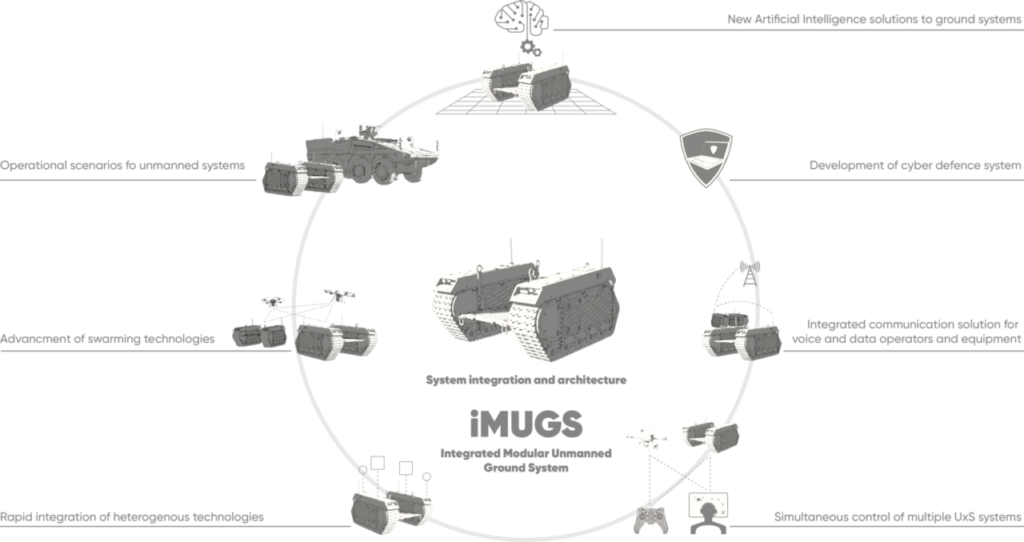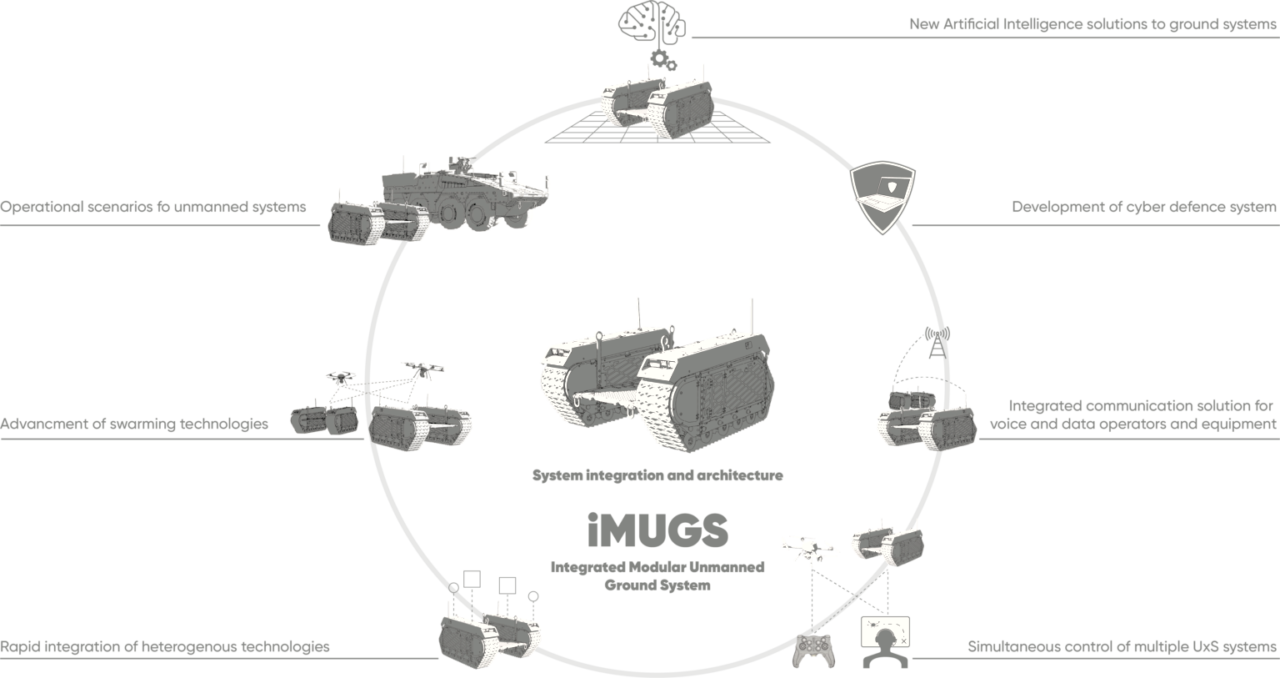TALLINN (ESTONIA) .The consortium that successfully delivered the groundbreaking iMUGS (Integrated Modular Unmanned Ground System) project in 2023 has submitted the iMUGS2 proposal, together with new consortium members, in response to the European Defence Fund’s (EDF) call to develop next-generation Multipurpose Unmanned Ground Systems (UGS).
Building on the success of iMUGS, the production-capable Consortium is set to revolutionize European military capabilities, enhance battlefield effectiveness and enable the fielding of European unmanned ground systems.
Continuing the experience gained from iMUGS (iMUGS2 aims to deliver combat-ready Unmanned Ground Systems, operational concepts at the battalion level), which was successfully carried out and delivered between 2020 and 2023, the Consortium’s recent proposal to the European Defence Fund EDF-2024-DA-GROUND-UGS-STEP call seeks to develop and field cost-effective modular unmanned systems capable of supporting dismounted, mechanized, and motorized infantry across all European environments, including GNSS denied environments and adverse climate conditions. The Consortium has named the project iMUGS2.
Unmanned vehicles (UxVs) have become one of the most significant innovations in modern military operations, as demonstrated during the war in Ukraine.
Effective cooperation between UxVs, manned vehicles, operators, and soldiers is essential for increasing combat effectiveness.
This collaboration intends to reduce the loss of life, minimize collateral damage, and lower the cognitive burden on warfighters.
The first iMUGS project laid the foundation by enhancing robotic capabilities on the battlefield.
Its key achievements included developing a System-of-Systems (SoS) open architecture, advancements in autonomous functions, cyber security measures, communication technologies, and improved command and control systems. Progress was also made in collaborative behaviours like swarming and homogeneous teaming.
iMUGS2 aims to enhance intelligence, surveillance, target acquisition and reconnaissance (ISTAR) capabilities, survivability, situational awareness, mobility, lethality, logistics, and training.
“By leveraging the outcomes of iMUGS, the iMUGS2 project represents a significant leap forward in developing and fielding advanced, cost-effective and combat-ready autonomous ground systems,” said Raul Rikk, Capability development director at Milrem Robotics, the consortium lead. “Our goal is to enhance European defence capabilities and develop solutions that are ready for procurement and integration by 2030,” Rikk added.
iMUGS2 has three main outcomes. First, it aims to develop, validate and demonstrate cost-effective, combat-ready UGSs that support dismounted troops at various operational levels and provide practical value in different operations.
Second, the project will develop operational concepts demonstrating how UGS and unmanned aerial systems (UAS) can enhance infantry battalion and cross-domain operations capabilities.
Third, the project will enhance the modular and open architecture and
Through Life Capability Management (TLCM) framework that enables efficient integration of autonomous functionalities with legacy and new systems across nmanned and optionally manned ground platforms, including conversion of manned vehicles.
© RIPRODUZIONE RISERVATA


